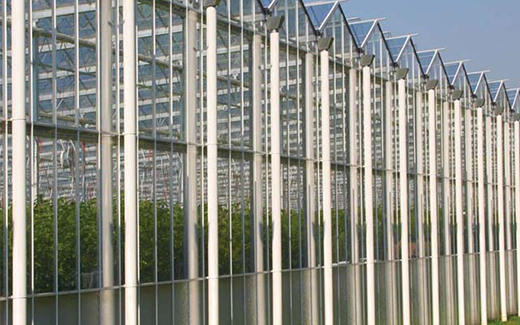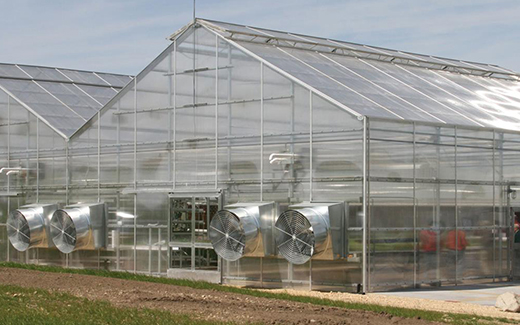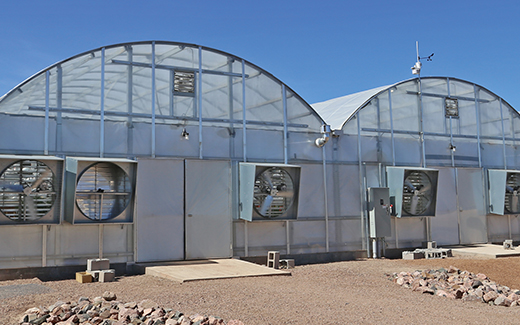The Definitive Guide To Why Growing Cannabis In A Greenhouse Is Better
Choosing the best setting for a cannabis operation can be a subject of debate for growers, and there are a number of factors at play that can impact their decision. Indoor warehouses have become a staple in cannabis cultivation, and while greenhouses are being used more frequently, popular opinion throughout the industry has caused many to perceive indoor growing as the better option.
Ultimately, the decision for a cannabis facility should come down to profitability. Rather than listening to common misconceptions, it’s important for growers to evaluate these options and decide which setting is going to help increase their profit margins, while still allowing them to put out a high-quality product.
When operations look at the similarities between an indoor and greenhouse grow, as well as the distinctions that set them apart, they’ll find that the two methods aren’t as different as they may have thought. In fact, greenhouses offer growers many of the same capabilities that an indoor warehouse can provide, along with numerous added advantages.
If growers incorporate light deprivation systems, automated climate control and the right supplemental lighting, they can really maximize the efficiency and profitability of their greenhouse grow. In turn, growing cannabis in a greenhouse can not only be viable, but actually a superior choice for maintaining success in this competitive market.
GREENHOUSE VS INDOOR QUALITY
The confusion surrounding greenhouses and what they are actually capable of can lead new growers to believe that indoor facilities are the best choice for running a successful cannabis operation. In actuality, the unique design of a greenhouse allows it to harness the best aspects of an indoor warehouse, helping produce cannabis of a similar or better quality.
“In terms of the product itself and the quality of cannabis coming out of the greenhouse, you can reach the same levels as indoor growing,” says Matthew Hively, Greenhouse Designer for GrowSpan. “Testing wise, you can get close to the same THC levels and terpene levels that you would find in an indoor grow, but you’re able to do it with less cost to the grower.”
See How This Operations Finds Success Growing Cannabis In A Greenhouse
Cannabis Greenhouse Lighting
Natural Light Saves Money
A large portion of savings in a greenhouse are generated by the use of natural light. By taking the most notable benefit of outdoor growing and allowing sunlight to pour in through the roof, growers are able to give their cannabis plants majority of the lighting they need, while significantly reducing their annual utility bill.
The more sunlight available, the less supplemental lighting is needed. In states that receive a lot of sunshine year-round, like Arizona, California and Florida, it’s feasible to achieve four harvests a year, without using any artificial lighting at all.
Lighting is the most expensive inefficiency when it comes to indoor cultivation. In a warehouse setting, growers must rely solely on artificial lights to try and replicate the power of the sun.
Electricity costs for indoor growers are estimated at up to $750 per pound. Since a greenhouse grow may only require one fourth as many lightbulbs as an indoor facility, and doesn’t need them to be ran 12 to 18 hours each day, those costs come in much lower around $350 per pound. Some industry experts speculate that greenhouses can save growers up to 90 percent in energy expenses when compared to indoor facilities.
In addition to being lighter on growers’ pockets, that reduced energy use eases the strain on the nation’s energy grid. Thanks to the sun, growing cannabis in a greenhouse requires far less energy per pound of flower than indoor operations. As the industry continues to evolve and more states legalize, it’s important that growers try to minimize their energy consumption, so as to not exacerbate an already stressed energy grid.
Sign Up Now To Learn More
Supplemental Lights
When growing cannabis in a greenhouse, having the right balance of lighting is vital for improving yields. During the offseason, when there’s not enough sunlight for the growing cycle, supplemental lights allow growers to increase the amount of cycles and harvesting opportunities they get each year. This lets them run their greenhouse all throughout winter, helping them keep pace with their indoor competitors.
Since natural sunlight provides a bulk of the lighting cannabis plants need, growers can space their fixtures farther apart in a greenhouse than in indoor facilities. As a result, greenhouse operations can limit their upfront costs, in addition to the long-term energy savings.
The two most popular types of fixtures to use for growing cannabis in a greenhouse are HPS (high pressure sodium) and LED (light emitting diode) lights. HPS fixtures provide orange and red spectrum light, which encourages budding and flowering in cannabis plants.
HPS lights work best when paired with natural sunlight, making them ideal for any greenhouse grow. The heat given off by HPS lights also helps maintain warm temperatures, which is especially useful for northern operations who have to combat colder growing seasons.
Now more than ever, growers are taking advantage of LED fixtures, because of the significant energy savings they offer. Since the energy used by LED bulbs goes primarily to light, rather than heat, they are incredibly efficient and can often last for 50,000 hours or more.
In some cases, these LED lights may also provide growers with additional ways to save money, outside of just lowering their utility bill.
“Although it’s on a state by state basis, it’s worth noting that energy-efficient lighting packages, especially LED’s, can warrant carbon credits or subsidies from the state,” said Hively. “When it comes to return on investment, you can get a substantial portion of that lighting package paid for by one of these grants or by one of the state’s incentives, essentially getting increased production for a fraction of what the lights would normally cost.”
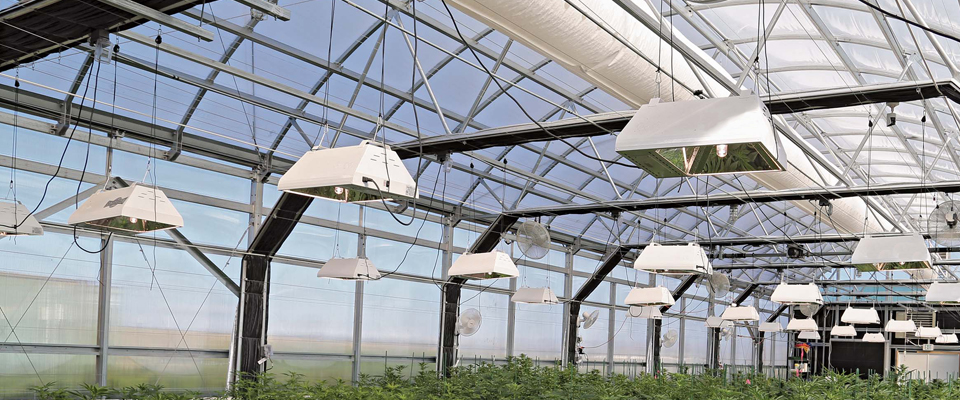
Growing Cannabis In A Greenhouse With Light Deprivation
A common misconception for growing cannabis in a greenhouse is that warehouses provide greater control over light cycle manipulation. However, automated light dep systems have actually supplied greenhouses with light management capabilities similar to that of an indoor grow room.
By utilizing automated light deprivation, operations can cast their greenhouse grow into darkness in a matter of moments, depending on the size of the structure. Modern blackout systems can be activated or retracted with the touch of a button, which streamlines light cycle control and helps operations trigger cannabis growth stages at the most optimal time.
When designed and installed by industry professionals, an automated light dep system should produce a healthy return on investment. The positioning and bracing of the system gets customized for each individual greenhouse, which results in improved longevity and fewer light leaks than a more traditional drop-in system.
According to Will Kacheris, Greenhouse Specialist for GrowSpan Greenhouse Structures, “this significantly increases the lifespan of the blackout system by eliminating wear spots and decreases install time by mitigating on-site errors from other made-to-fit systems.”
Check Out These Marijuana Greenhouses From GrowSpan
Environmental Control In A Cannabis Greenhouse
In a modern greenhouse grow, operations receive all the benefits that come with producing sun-grown cannabis, while accessing the same level of climate control as indoor warehouses. When these growers employ smart controls, they can automate every aspect of their facility, including HVAC, lighting, shade systems, irrigation and fertigation, ventilation and more.
With a computer-based system, like a smart controller, those systems are able to function on a timer. Growers can then create a rigorous schedule for the equipment to follow, allowing their greenhouse to run at maximum efficiency.
Combined with sensors that detect changes in the environment, a smart controller will trigger any equipment necessary to stabilize environmental conditions. For instance, if the temperature drops too low, a smart controller will turn on the heating system and turn it back off once a desired temperature has been reached.
Compared to older, thermostatic systems, smart controllers may seem like a big expense. Still, the startup cost can be made up for quickly through energy and labor savings, sometimes within the first year of operation.
Since smart controllers are calibrated to work with smart phones and laptops, growers can also adjust the environmental conditions inside their greenhouse from almost anywhere. If power or equipment should fail, a smart controller can send a notification immediately, and growers are able to deal with the issue right away.
“There’s no better feeling for a grower than being able to confirm your greenhouse is running correctly during a storm or hot weather event from the comfort of your own house,” said Kacheris.
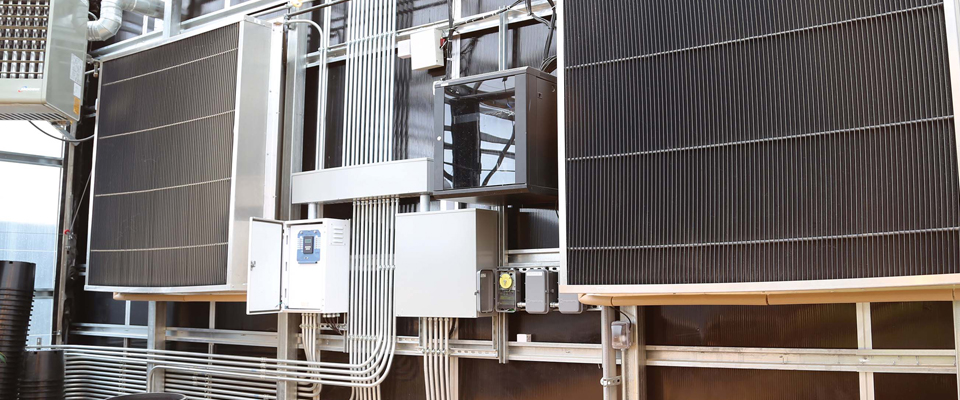
A Cannabis Greenhouse Offers The Ultimate Versatility
Warehouses and other indoor settings have historically allowed growers to stay hidden from public view. But, as states continue to legalize, growers are opting for cost-savings over discretion. Not only is growing cannabis in a greenhouse more cost and labor-efficient, but there is also tremendous flexibility when it comes to cannabis greenhouse design.
Simpler expansion is one of the key advantages for a commercial greenhouse grow. While expanding an indoor facility can be difficult, or sometimes impossible, many greenhouses feature gutter-connect designs that allow operations to scale their facility with their business. As long as operations have land available to accommodate future growth, they can plan for expansion right from the start and eventually develop a larger facility than their indoor competitors.
Additionally, greenhouses can be customized from top to bottom, whether it’s the materials used during construction or the equipment and accessories that fill the interior. Operations can incorporate benching that optimizes growing space, as well as choose between growing in pots, containers, hydroponics systems or using a combination of techniques.
By growing cannabis in a greenhouse, operations are able to get the ideal structure for their location and production goals, dramatically improving yields and lowering their cost per gram. As time goes on and margins tighten, growers are learning that the best way to adapt is to establish a greenhouse grow.
“In large-scale agriculture, more and more growers are going the way of the greenhouse,” said Hively. “It just makes sense. You can grow in a controlled environment; if you do it hydroponically, you save 80-90% of your water usage, and the level of precision you can achieve with today’s computers and sensors is remarkable.”
Overall, commercial operations looking to grow cannabis on a larger scale have the most to gain from a greenhouse setting. Although indoor facilities can provide an effective space for cannabis production, a greenhouse’s additional benefits are hard to overlook. Greenhouses can help growers achieve a similar end product, with greater efficiency, all while reducing their overhead costs.
Looking to start a cannabis greenhouse grow? Request a Quote today for free project-specific information.
This post was originally published in August, 2018 and has been updated for freshness, accuracy and comprehensiveness.
Related Articles
Creating THe Ultimate Cannabis Greenhouse Environment
To create industry-leading cannabis greenhouses, GrowSpan focuses on five key environmental factors that affect high-quality crop growth.
Making Life Easier With A Light Dep Greenhouse Kit
Through state-of-the-art structures and automated light dep, operations can gain complete control over growth cycles and give their plants the environment they need to thrive.
Growing Cannabis In A Cold Climate Greenhouse: 4 Steps To Boosting Production
With all of the challenges cannabis growers already face in the industry today, it’s important they use every tool at their disposal to keep bud quality consistent year-round.
Solving Common Problems For The Cannabis Grower
This resource is intended to familiarize growers with common problems that arise when cultivating cannabis, so they can treat them before the issues get out of hand.
6 Features Every Cannabis Grower Needs To Incorporate Into Their Greenhouse
The features laid out in this blog can help growers make a lasting impression on the market and set them up for long-term success.
Greener Cannabis Cultivation Practices
With indoor cultivation having become the standard by default, cannabis growing has not been the most energy-efficient practice in the past.


